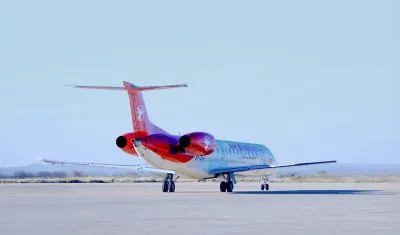The Indian Ocean island state of Mauritius is used to achieving the top spot in most regional rankings and is now also scoring high marks on global ranking charts. Despite a general paucity of natural resources, the country has coupled its well-educated workforce with innovative and often bold policies to engineer a thriving $11bn economy, based largely on services and its strategic location between Africa and Asia. This report examines what makes Mauritius such a special case in Africa.
In 1961, a few years before Mauritius gained independence from Britain in 1968, Nobel Prize-winning economist James Meade had a bleak view of its future: “It is going to be a great achievement if the country can find productive employment for its population without a serious reduction in the existing standard of living … The outlook for peaceful development is weak.”
A few years later, in 1972, with post-colonial Mauritius still shackled by the burdens of its past, so shocked Nobel laureate VS Naipaul, that he wrote that its “problems defy solution”. Meade and Naipaul were not the only ones to think so, as most analysts were highly pessimistic about the future for this small island in the Indian Ocean.
Despite such inauspicious beginnings, Mauritius has thrown its critics’ words back at them and continues to astound with its ability not only to stay the pace but thrive in the teeth of global adversity.
It has rapidly transformed its low-income agriculture-based economy into a middle-income diversified economy with thriving industrial, financial and tourist sectors.
Mauritius came top of the 2010 Ibrahim Index of African Governance. The index prepared and compiled by the Kennedy School of Government at Harvard University, rated Mauritius as the best-run country in Africa out of a total of 48 countries surveyed.
In a connected world where every country is often linked to the perils of others, Mauritius has fully understood the dangers of economic overreliance. Its success lies in constant investment to adapt the traditional four pillars of its economy – sugar, textiles, tourism and financial services – to be better equipped and resilient towards shocks by focusing on productivity, competitiveness and job creation. This has served the country well.
There has been a sustained improvement in economic conditions, with growth averaging around 4.6% between 1977 and 2008, and reaching 5.6% in the past three years.
Even more startling and rare is that this economic growth has also resulted in more equitable income distribution. The Gini coefficient (a measure of inequality and wealth distribution with 0 representing absolute equality and 100 representing absolute inequality) fell from 45.7 to 38.9 between 1980 and 2006. To put this in context, France, for example, had a Gini coefficient of 32.7 in 2008.
This economic performance is tangibly reflected in the population indicators, with income per capita of $4,000, increased life expectancy now reaching 71.4 years, lower infant morality rates, an adult literacy rate of 83% and better infrastructure across the island. Today this tropical archipelago of 1.3m people provides free education for all its citizens, free transportation for school children and free health care, which even includes heart surgery.
This degree of social providence is usually associated only with advanced countries that have well-organised welfare structures. Even some of the wealthiest countries of the world, for example. the US, do not provide the same level of benefits to their citizens.
People are the true assets
Given its lack of natural resources, Mauritius has invested in its people. The focus on education has produced a highly skilled workforce and a booming service sector. Once a mono-crop economy relying on sugar cane – still occupying 90% of cultivated land and providng around 25% of earnings –Mauritius has diversified from agriculture and its related industry and is now earning the bulk of its income from services – which some estimates say account for up to 72% of GDP. There is a sophisticated ICT-BPO sector providing call centres, business process outsourcing (BPO), software development and data centres. There are currently over 13,000 professionals in over 330 ICT-BPO companies on the island. The government predicts that the sector will require nearly 30,000 more to sustain this growing sector over the next three years.
This burgeoning sector was recognised in the latest AT Kearney Global Services Location Index report, where Mauritius, as a new entrant on the list, ranked in 25th position, one of only four new entrants to enter in the top 25th tranche. The index is based against three brackets – cost (40%), people (30%) and business environment (30%) – and is recognised by many multinationals and consultancy firms as a benchmark for rating service off shoring. Mauritius was particularly noteworthy in the categories of business environment and cost.
The hospitality sector is also an important engine of the Mauritian economy, with an array of hotels which includes many of the world’s most luxurious chains. The sector employs around 27,000 people and contributes 8% to GDP. The island attracts around one million visitors every year, but this number is expected to increase. The growth of the industry is creating ever more demand for skilled and qualified manpower. It has been a major source of job creation and the development of skills through training on the job and in management schools.
The financial services sector is also another cornerstone of the economy, with an average growth of 7.8% per annum over the last few years, contributing 12% to GDP. There are over 9,000 offshore entities on the island, which cater for commerce in India and South Africa. Mauritius is also placing more resources into private and public healthcare. One spin-off has been a significant boom in healthcare tourism. Foreign patients increased tenfold over the last four years and government estimates that the number of private health clinics has increased by over 50% in three years.
Foreign inflows
The country scored 76.2 in the 2011 Index of Economic Freedom, ranking it the 12th freest out of 183 countries. The same index ranks Mauritius first out of 46 countries in the sub-Saharan African region, with the overall score standing well above the world average. Furthermore, the World Bank’s Doing Business 2010 index ranked Mauritius 20th out of 178 countries globally.
A transparent and well-defined investment code and legal system has certainly helped to attract FDI inflows, which remain some of the highest in the region.
There are several reasons for this, including: no restrictions on complete (100%) foreign ownership, no capital gains tax, access to offshore banking facilities, a strategic position that can serve as a gateway to the African continent and Asia, and attractive trade agreements which give preferential market access to the EU and US with a reliable network of sea and air connections.
Weathering financial storms
The island’s recovery from the financial meltdown of 2008 has also had a positive bearing on foreign investment. The IMF has applauded Mauritius’s policy response by stating it had been prompt and decisive with a fiscal stimulus package amounting to 5% of GDP from July 2009 to December 2010. The package, titled the ‘Mauritian Approach’, immediately provided temporary financial relief to firms hit by the crisis. For banks, conservative business practices and strong initial balance sheets also played a deceive role.
Despite these accomplishments, Mauritius has not been able to entirely escape the fallout of the global economic slowdown. In the first quarter to March, the Bank of Mauritius announced that foreign investment fell by 70%. The trade deficit expanded by 6.1% in the first half of 2011, due to an increasing imports bill. The central bank is predicting a trade deficit of MUR 79bn for 2011, up from MUR 66.5bn in 2010, mostly due to the increasing cost of mineral fuels and lubricants. Mauritius’s economy is estimated at $11bn, with reserves worth $2.9bn, up from $1.4bn in 2006.
Currency conundrums
Europe is the island’s main trading partner, with about 41% of foreign currency revenue held in euros and around 67% of the import bill denominated in dollars.
Bank of Mauritius Governor Rundheersing Bheenick stated his concern recently, saying Mauritius cannot “get too exposed to these currencies and must take steps so that reserve managers can quietly diversify away from too much dependence on what happens to these reserve currencies.”
Mauritius already holds reserves in commodity currencies such as the New Zealand, Australian and Canadian dollars. The country is said to be looking at possibilities to further diversify its reserves. One proposed plan is to buy Chinese reminimbi bonds, South African bonds and Indian bonds to reduce dependence on the main reserve currencies.
Germany has argued for the reminimbi to be part of the IMF’s Special Drawing Rights, stating that this will allow China’s currency to float more easily and also give the reminimbi the chance to become a reserve currency, adding stability to the global financial system and easing world trade. The Mauritius central bank has stated that it wishes to diversify its reserve currencies for trade reasons, as most imports from India and China are denominated in dollars and it would be more advantageous to trade in the yuan and rupee.
It is certain that Mauritius is facing many challenges ahead, although the country has a history of adapting to difficult economic environments. There seems to be a general consensus amongst local decision makers that there is a changing balance of power to the east, as China and India are steadily taking centre stage. Looking at tourist arrivals, for example, makes it clear that Asia is playing a greater role in the island’s life, with tourist arrivals increasing 21.7% in the first quarter of 2011 and arrivals from China increased by 53% over the same time period. Does the future for Mauritius lie in the East?
Want to continue reading? Subscribe today.
You've read all your free articles for this month! Subscribe now to enjoy full access to our content.
Digital Monthly
£8.00 / month
Receive full unlimited access to our articles, opinions, podcasts and more.
Digital Yearly
£70.00 / year
Our best value offer - save £26 and gain access to all of our digital content for an entire year!

 Sign in with Google
Sign in with Google 


